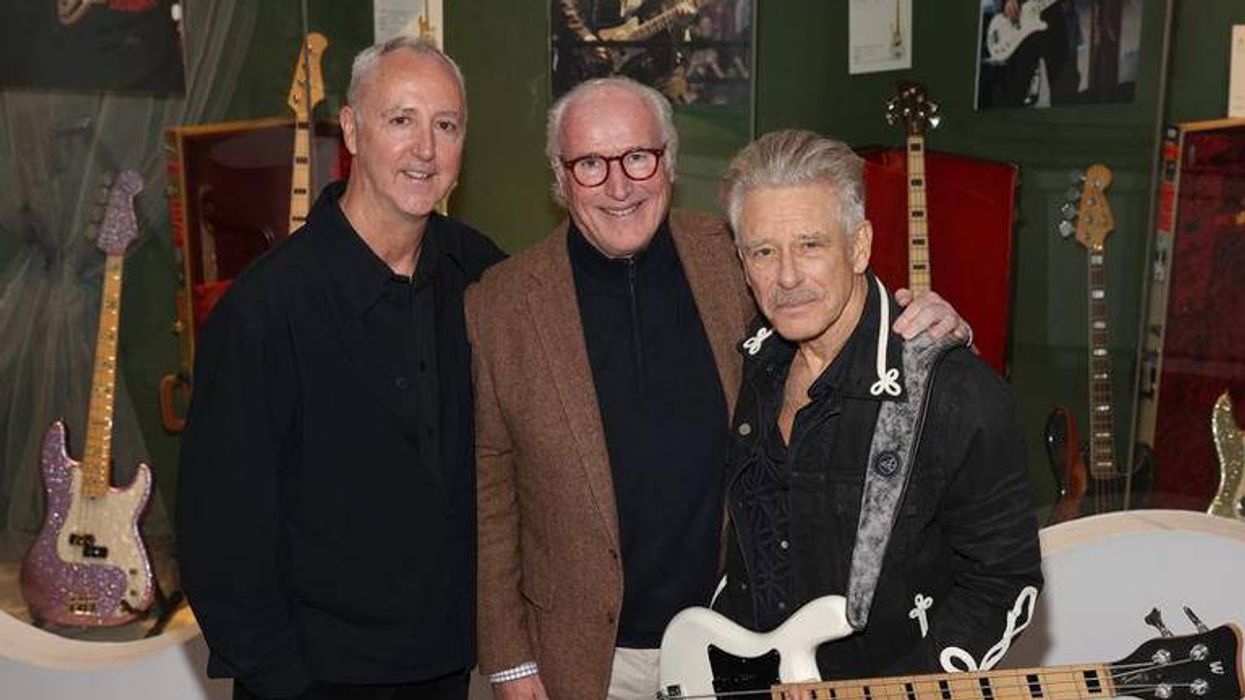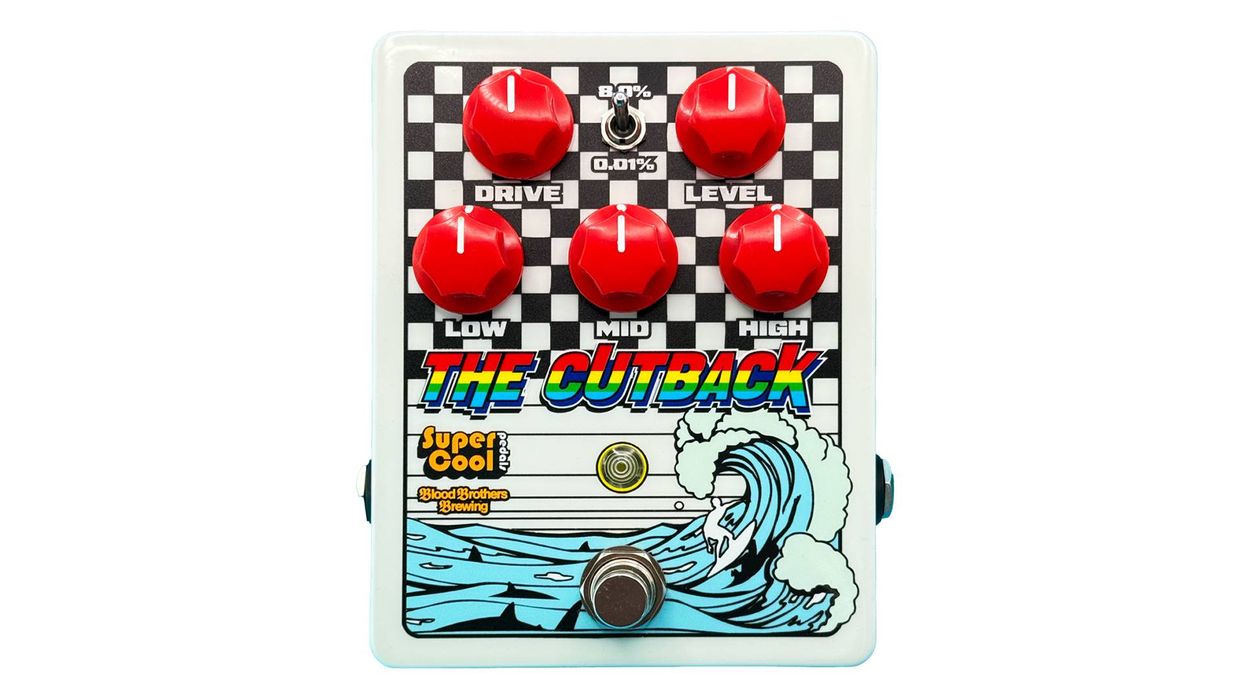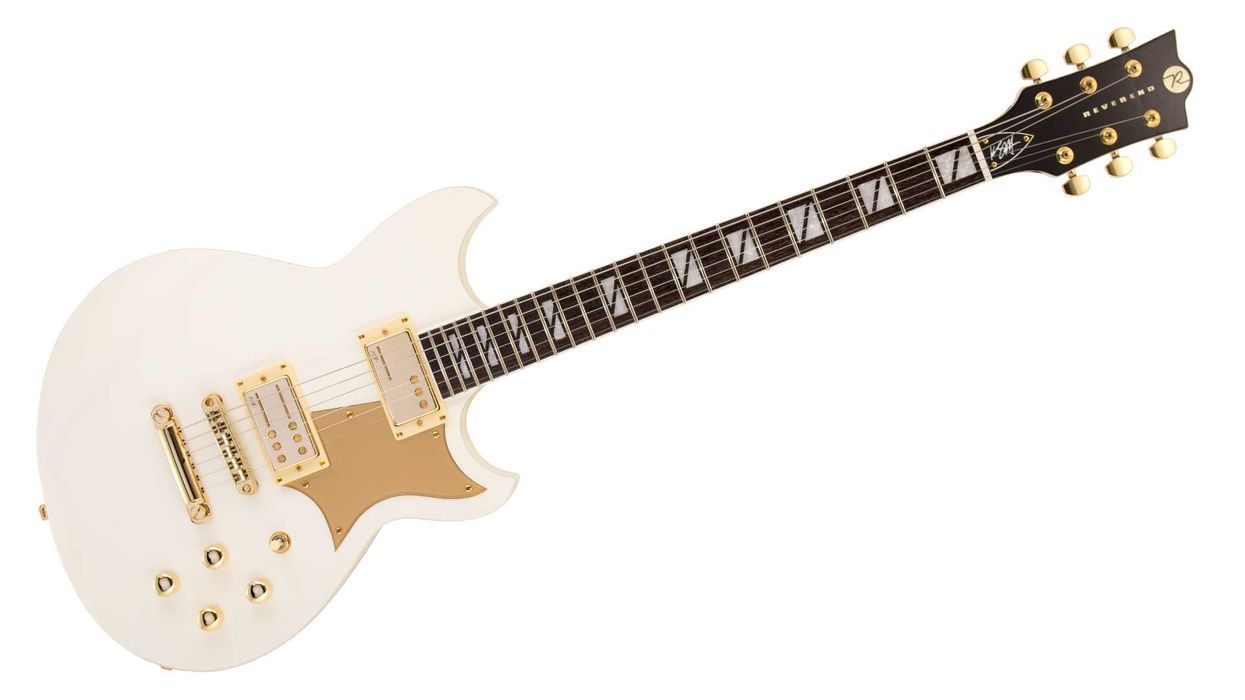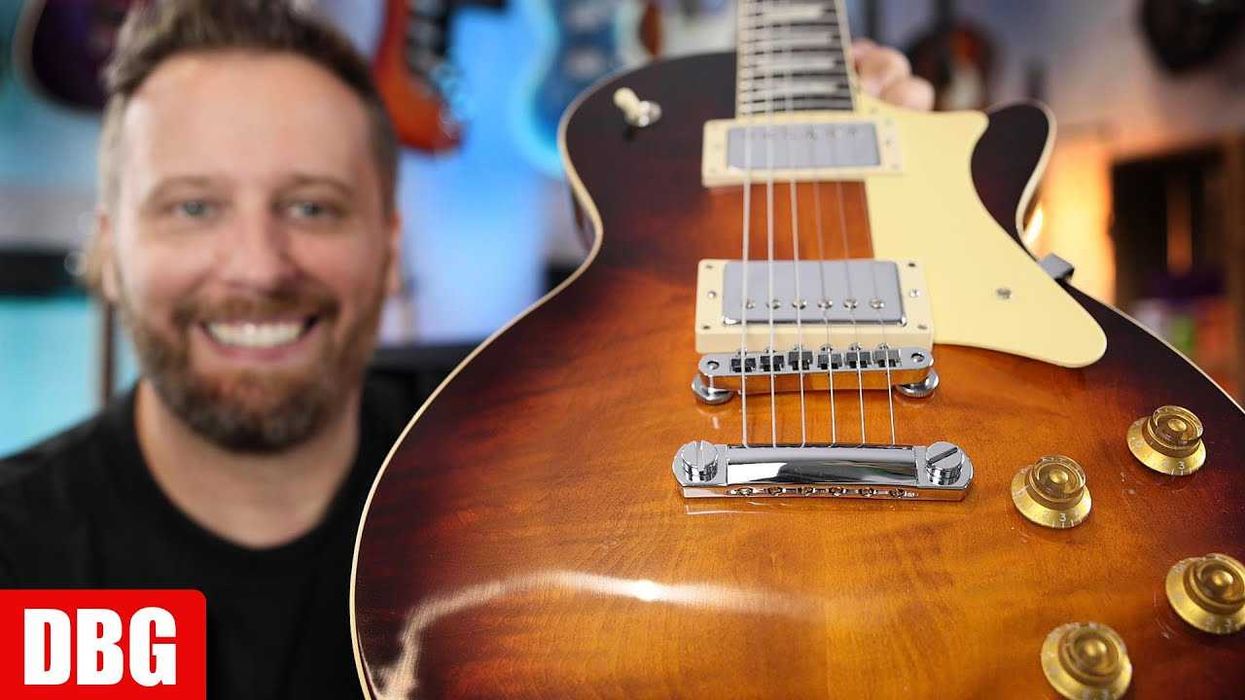Dear Trash or Treasure,
I’ve had this beautiful little Gibson guitar for 40 years, and in all that time, I haven’t been able to find any information about it. There isn’t even a serial number. I met Les Paul himself in Frankfurt in 1978 at a music trade show, and he only said, “Yes, it was a nice beginning.” What can you tell me about this guitar?
Helmut Gaffal, Germany
Hi Helmut,
I’m glad to hear that I have readers on the other side of the world! First, I want to mention that Les Paul was honored by the Rock and Roll Hall of Fame’s annual American Music Masters Series in mid-November. Paul is generally credited with building the first electric solidbody guitar in the early 1940s (although innovators were toying with electric guitars as early as the late 1920s—this is a very controversial topic amongst electric guitar historians). He also collaborated with Gibson to develop the Les Paul solidbody guitar that was released in 1952, which continues to be their most popular guitar 57 years later.
However, you won’t find “Les Paul” anywhere on your little guitar, because the real name is the Melody Maker. Granted, it looks exactly like a Les Paul and many novices could easily mistake the Melody Maker for the Les Paul Junior, but Les Paul is not attached to the Melody Maker name in any way. The Les Paul Junior was introduced in 1954 as a budget model to the Les Paul, and the Les Paul Special was introduced in 1955 as an intermediate model between the two. By the late 1950s, it was apparent that a budget model below the Les Paul Junior was necessary to fulfill the demand created by new guitarists, and Gibson set out to design it. I can’t find any concrete proof of why this guitar was not called a Les Paul, or some variation thereof. One guess is that Les Paul didn’t want his name associated with such a low cost, budget
guitar. On the other hand, the single cutaway Les Paul was selling less—shipping records prove that. Also in 1958, Gibson redesigned the Les Paul Junior and Les Paul Special bodies with double cutaways and introduced the famous Sunburst finish to the regular Les Paul model, so maybe the name Melody Maker had something to do with generating new interest. If any readers have any insight on this topic, feel free to contact me about it.
Regardless, your Gibson Melody Maker is a smaller, 3/4-sized guitar with a 22.75” scale that was really aimed at students. It appears to have been produced between 1959 and 1961 (I can’t confirm the year because there is no serial number present). It also appears that the guitar was repainted or refinished at some point (Walnut or Natural were not standard finishes on the Melody Maker), and the serial number on the back of the headstock was likely covered up then.
The Melody Maker was built rather uniquely, as the entire pickguard had the pickup, electronics, and controls all attached to it; they were simply mounted into the guitar inside a large routing that allowed it to be built more quickly and cheaply. It features a slab mahogany body (1.375” thickness—.375” thinner than a Les Paul Junior); mahogany neck; 12/19-fret rosewood fingerboard with dot inlays; narrow headstock; wraparound bridge/tailpiece; black pickguard with a single pickup, two knobs (volume, tone), and the output jack all mounted to it; and chrome hardware. The original finish on this guitar was Golden Sunburst. 1,676 of these guitars were produced in 1959, 42 in 1960, and 225 in 1961 (although 1961 was a transition year to the new body style).
In 1961 a double rounded cutaway body was introduced, and in 1965 a sharper double cutaway was introduced. The single cutaway Melody Maker did not appear in the Gibson catalog again until 1986, and by then the specs had changed considerably. In 2003, Gibson finally recognized the Les Paul design of the Melody Maker and introduced a single cutaway, single pickup model called the Les Paul Melody Maker. Currently, Gibson offers a single pickup Melody Maker guitar that continues to be their student/budget/entry-level guitar for $582 (extremely reasonable for a U.S.-built guitar that plays very well).
Mint condition, single cutaway Melody Makers from the 1959–1961 era are currently valued between $1500 and $2000, while their 3/4-sized counterparts are valued between $900 and $1200. Unfortunately for your guitar, a refinished body reduces the value by more than half today, and the condition looks to be about 70 percent (very good). Today, this guitar is only worth between $300 and $400, but I know I wouldn’t be the first to tell you that it is a sweet-playing little guitar. Many times, the beat-up, ugly guitars play much better than the mint-condition, pretty ones. You could probably ask Les Paul himself, who plays his 1970s Les Paul Recording model every week at the Iridium Jazz Club in New York City—the treasure lies in how the guitar plays!
Zachary R. Fjestad
is the author of the Blue Book of Acoustic Guitars, Blue Book of Electric Guitars, and the Blue Book of Guitar Amplifiers. Questions can be submitted to: Blue Book Publications Attn: Guitar Trash or Treasure 8009 34th Ave. S. Ste #175 Minneapolis, MN 55425 800-877-4867 bluebookinc.com guitars@bluebookinc.com
I’ve had this beautiful little Gibson guitar for 40 years, and in all that time, I haven’t been able to find any information about it. There isn’t even a serial number. I met Les Paul himself in Frankfurt in 1978 at a music trade show, and he only said, “Yes, it was a nice beginning.” What can you tell me about this guitar?
Helmut Gaffal, Germany
Hi Helmut,
I’m glad to hear that I have readers on the other side of the world! First, I want to mention that Les Paul was honored by the Rock and Roll Hall of Fame’s annual American Music Masters Series in mid-November. Paul is generally credited with building the first electric solidbody guitar in the early 1940s (although innovators were toying with electric guitars as early as the late 1920s—this is a very controversial topic amongst electric guitar historians). He also collaborated with Gibson to develop the Les Paul solidbody guitar that was released in 1952, which continues to be their most popular guitar 57 years later.
However, you won’t find “Les Paul” anywhere on your little guitar, because the real name is the Melody Maker. Granted, it looks exactly like a Les Paul and many novices could easily mistake the Melody Maker for the Les Paul Junior, but Les Paul is not attached to the Melody Maker name in any way. The Les Paul Junior was introduced in 1954 as a budget model to the Les Paul, and the Les Paul Special was introduced in 1955 as an intermediate model between the two. By the late 1950s, it was apparent that a budget model below the Les Paul Junior was necessary to fulfill the demand created by new guitarists, and Gibson set out to design it. I can’t find any concrete proof of why this guitar was not called a Les Paul, or some variation thereof. One guess is that Les Paul didn’t want his name associated with such a low cost, budget
guitar. On the other hand, the single cutaway Les Paul was selling less—shipping records prove that. Also in 1958, Gibson redesigned the Les Paul Junior and Les Paul Special bodies with double cutaways and introduced the famous Sunburst finish to the regular Les Paul model, so maybe the name Melody Maker had something to do with generating new interest. If any readers have any insight on this topic, feel free to contact me about it.
Regardless, your Gibson Melody Maker is a smaller, 3/4-sized guitar with a 22.75” scale that was really aimed at students. It appears to have been produced between 1959 and 1961 (I can’t confirm the year because there is no serial number present). It also appears that the guitar was repainted or refinished at some point (Walnut or Natural were not standard finishes on the Melody Maker), and the serial number on the back of the headstock was likely covered up then.
The Melody Maker was built rather uniquely, as the entire pickguard had the pickup, electronics, and controls all attached to it; they were simply mounted into the guitar inside a large routing that allowed it to be built more quickly and cheaply. It features a slab mahogany body (1.375” thickness—.375” thinner than a Les Paul Junior); mahogany neck; 12/19-fret rosewood fingerboard with dot inlays; narrow headstock; wraparound bridge/tailpiece; black pickguard with a single pickup, two knobs (volume, tone), and the output jack all mounted to it; and chrome hardware. The original finish on this guitar was Golden Sunburst. 1,676 of these guitars were produced in 1959, 42 in 1960, and 225 in 1961 (although 1961 was a transition year to the new body style).
In 1961 a double rounded cutaway body was introduced, and in 1965 a sharper double cutaway was introduced. The single cutaway Melody Maker did not appear in the Gibson catalog again until 1986, and by then the specs had changed considerably. In 2003, Gibson finally recognized the Les Paul design of the Melody Maker and introduced a single cutaway, single pickup model called the Les Paul Melody Maker. Currently, Gibson offers a single pickup Melody Maker guitar that continues to be their student/budget/entry-level guitar for $582 (extremely reasonable for a U.S.-built guitar that plays very well).
Mint condition, single cutaway Melody Makers from the 1959–1961 era are currently valued between $1500 and $2000, while their 3/4-sized counterparts are valued between $900 and $1200. Unfortunately for your guitar, a refinished body reduces the value by more than half today, and the condition looks to be about 70 percent (very good). Today, this guitar is only worth between $300 and $400, but I know I wouldn’t be the first to tell you that it is a sweet-playing little guitar. Many times, the beat-up, ugly guitars play much better than the mint-condition, pretty ones. You could probably ask Les Paul himself, who plays his 1970s Les Paul Recording model every week at the Iridium Jazz Club in New York City—the treasure lies in how the guitar plays!
Zachary R. Fjestad
is the author of the Blue Book of Acoustic Guitars, Blue Book of Electric Guitars, and the Blue Book of Guitar Amplifiers. Questions can be submitted to: Blue Book Publications Attn: Guitar Trash or Treasure 8009 34th Ave. S. Ste #175 Minneapolis, MN 55425 800-877-4867 bluebookinc.com guitars@bluebookinc.com





![Devon Eisenbarger [Katy Perry] Rig Rundown](https://www.premierguitar.com/media-library/youtube.jpg?id=61774583&width=1245&height=700&quality=70&coordinates=0%2C0%2C0%2C0)








